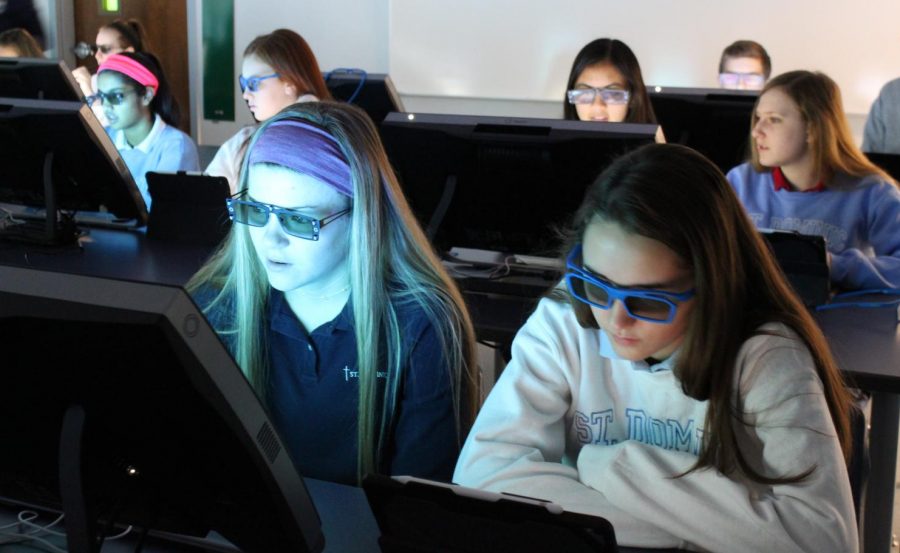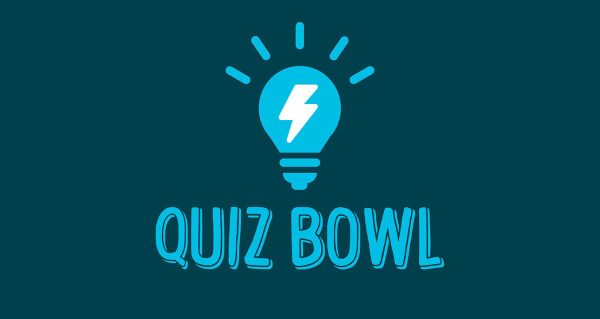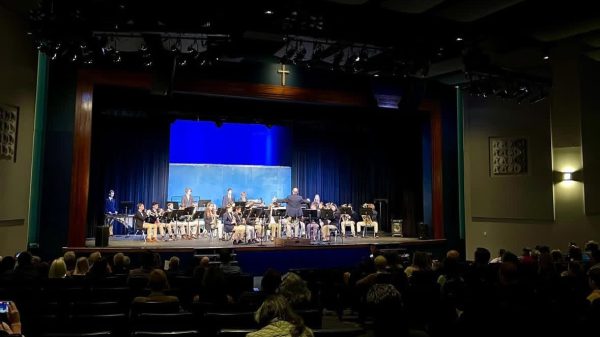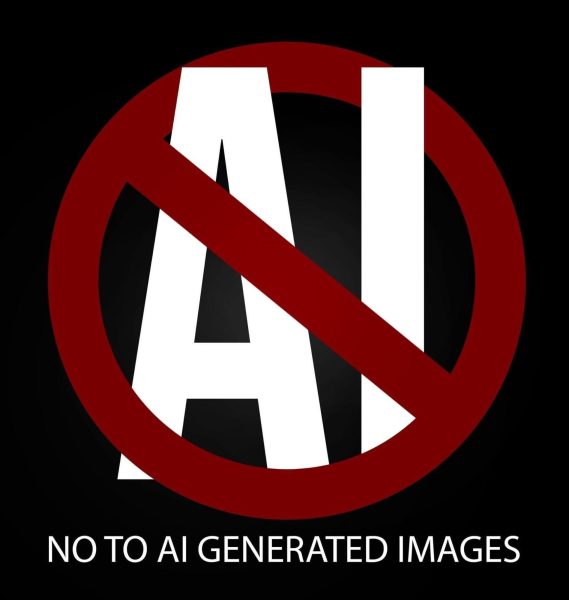There Will Be No ZZZs in zSpace
Students using the brand new zSpace
After months of talk about new technology at St. Dominic, our new zSpace is up and running. The 3D virtual and augmented reality learning devices are allowing students to get a new perspective and a hands-on approach to education.
Science teacher Mrs. Juergensmeyer has spearheaded the effort for integrating zSpace into the classroom, and she is extremely excited for this new addition to St. Dominic.
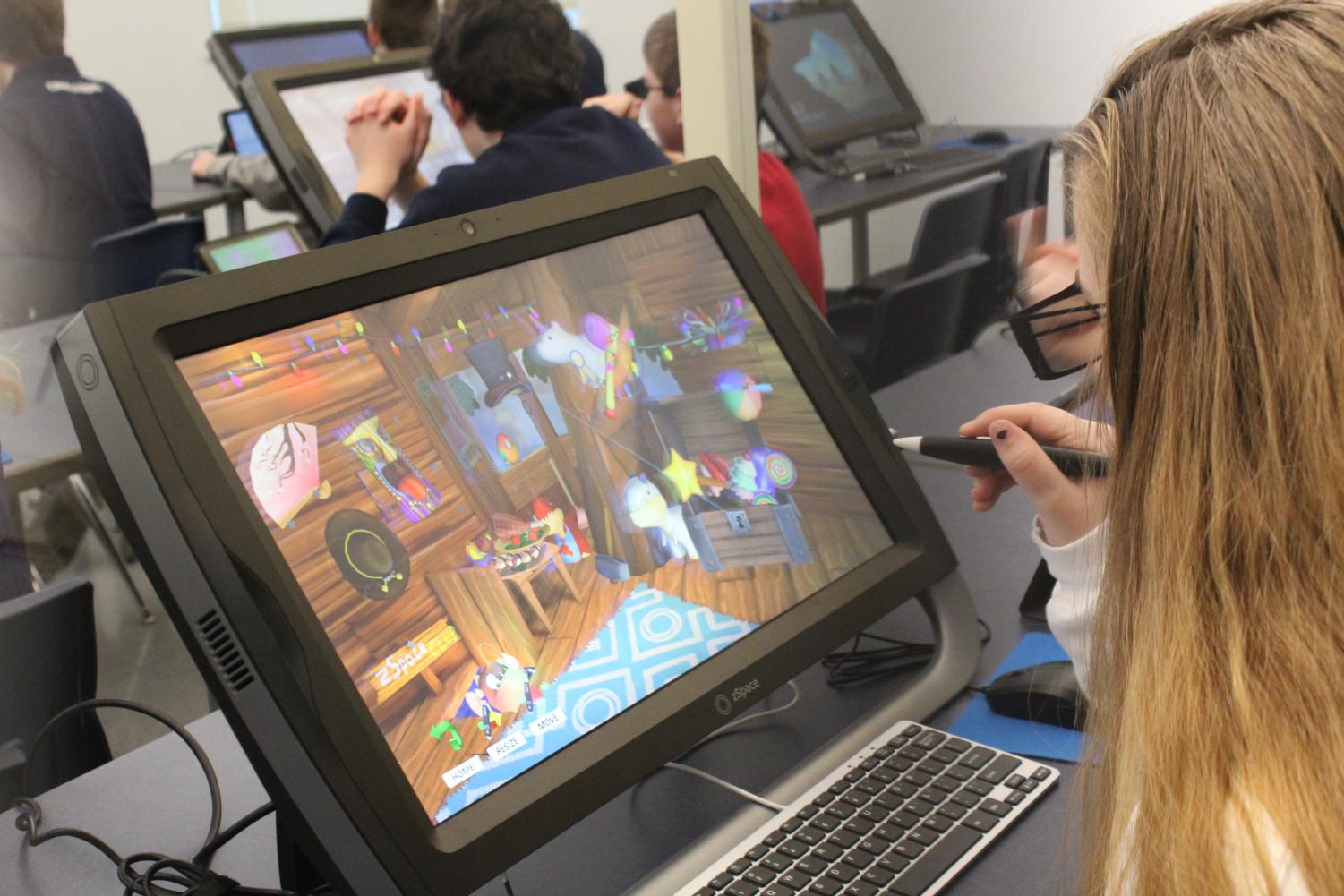
“When you’re inside of a zSpace program, there’s many different options of what you can do. In one of the anatomy programs, you can pull out a model of the human heart and can actually feel it beating through the stylus you’re holding. You can then proceed to dissect it, pull it apart and look inside of it. It’s a way to see where you couldn’t see before,” Mrs. Juergensmeyer said.
There are two partners to one station: the driver and the passenger. If you’re the driver, you’re in control and can actually pull objects out at you in 3D. If you’re the passenger, you can still see inside the 3D objects the driver pulls out, but it’s not as vivid and you can’t bring something up to your face.
In the past week, all math and science teachers were trained on how to use the devices. They were also given many ideas for utilizing zSpace in their classes. Biology just tested out one of those—a plasma membrane program—where they pulled the membrane apart and explored. Chemistry is looking into programs concerning the structures of molecules, while geometry and algebra are looking into graphing and word problem programs.
“zSpace is exceptionally good at simulating things, so I would say it is more of a beneficial thing for my classes on application problems. That’s perfect, as most students don’t like word problems because they can’t picture what is happening,” math teacher Mr. Strecker said.
No doubt about it, the biggest application zSpace will have is for anatomy. The technology is (literally) jaw-dropping.
“You can see all of the body parts of a human, pull them apart and see how they connect together. One program we have purchased shows a human chewing, and you can actually watch the muscles when they chew and see how a mandible moves,” Mrs. Juergensmeyer said.

Science and math classes aren’t the only ones who plan on using zSpace. The ideas for how to utilize the technology are endless. Mrs. Juergensmeyer has visited the Alamo and seen historical figures like Abraham Lincoln all without moving from her seat. Even art can get in on the fun with zSpace’s sculpting program where students can virtually sculpt pieces out of clay.
zSpace is an amazing tool. Its technology allows students to dig deeper into their education by transporting them out of a traditional classroom and into the exciting 3D digital age.
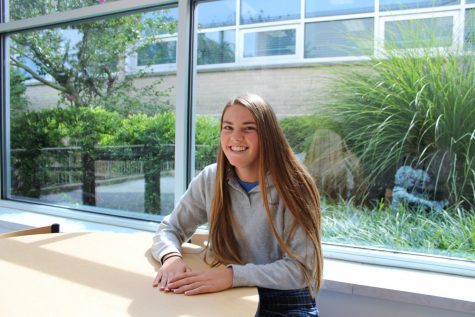
Alyssa Buchheit is a senior here at St. Dominic. She is involved in soccer, book club, National Honor Society, ambassadors and many other clubs. Outside...

Elizabeth Petruso is a senior here at St. Dominic High School. Elizabeth is the President of Student Council and a varsity cheerleader. She is extremely...


